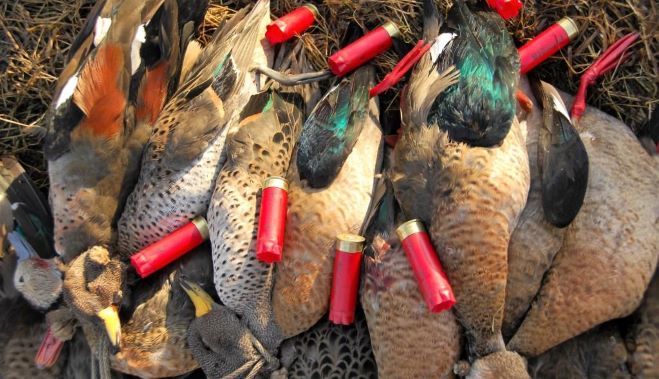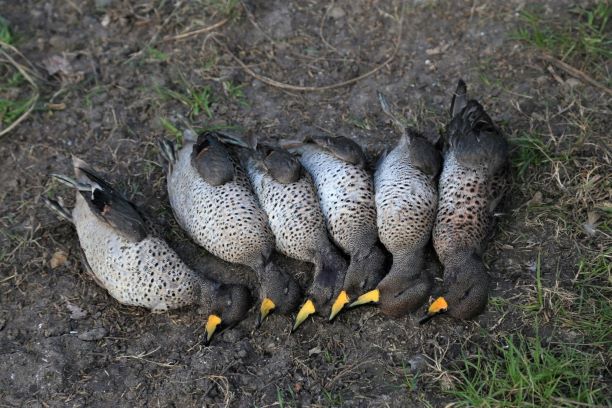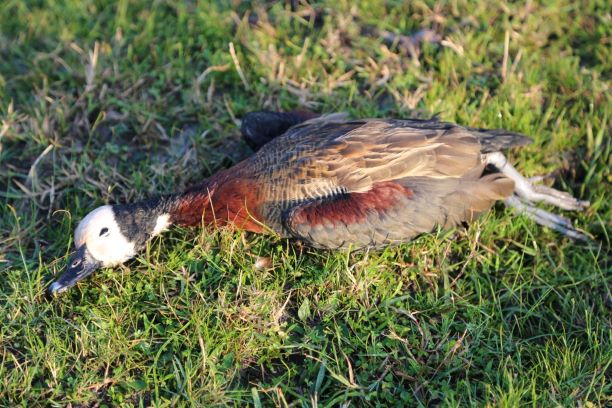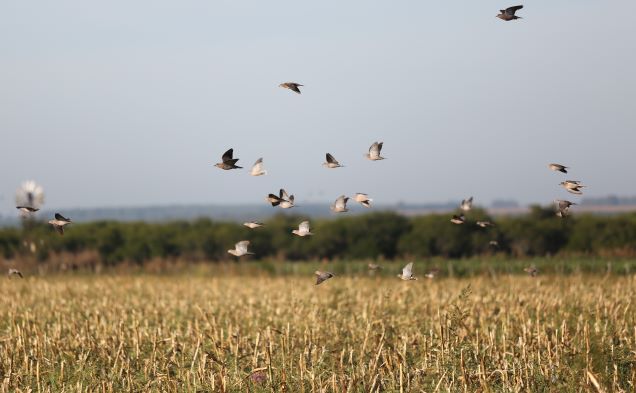Argentina perdiz…a one bird covey flush
BY JIM NIEMIEC
Western Outdoor News Staff Writer
BUENOS AIRES, ARGENTINA – Bird hunters head off annually to Safari Club International’s Hunters’ Convention in Las Vegas to talk to outfitters about the many different upland game bird and waterfowl hunting opportunities available world wide. Prime bird hunting destinations from Canada, Mexico, South Africa, New Zealand and South America are well represented at this show and with good exchange rates now available, wing shooters are booking many distant hunts. This Western Outdoor News hunting editor spent three days at this year’s SCI event in search of the best multiple species bird hunting destination and ended up booking a hunt with Dr. Patricio Geijo, owner/outfitter for Argentina Big Hunting.
Argentina offers by far the best dove hunting in the world, but this hunter’s quest was to concentrate on other bird species that are not found in any other part of the world. The highly prized perdiz upland game bird and a variety of unique and very colorful waterfowl, not found in any North American flyway, would be the focus of this hunt, but still allowing time to hunt for eared dove under massive flyways.
Geijo assured us that package hunts he offers are complete from the time of arrival in Buenos Aires, inclusive of all during the hunt and a safe return back to Argentina’s national airport. The flight from LAX to Buena Aries, on board an Aeromexico 777-200/300, was reasonable, on time and very comfortable.
Upon arrival at the hunt lodge, which is on a rancho given in the 1840’s by the King of Spain as a gift to one of his generals after numerous successful battles against native Argentineans’ the estancia was built in 1850 by the general for one of his 4 daughters. After settling in a traditional afternoon dove hunt was on tap. A fine selection of Berretta and Benelli shotguns are available and each hunter is assigned a bird boy. All hunting arrangements are either made by Dr. Geijo or his Hunt Master Lisamdro Piaseschi, both of whom are fluent in English.
After 10 boxes of 20 ga. ammo there was a pile of eared dove on the ground and it was time to return to the lodge to talk about the next day’s hunt for perdiz. This hunter had no idea what to expect other than to be prepared to walk grass pastures and work closely behind a good gun dog. It had rained a total of 14 inches prior to our arrival and the black mud was ankle deep in places which necessitated wearing knee high rubber hunting boots. It had rained so hard that all nearby rivers were blown out and our hopes of fishing for Golden Dorado on Rio Uruguay were unfortunately washed away with heavy runoff from up river dams.
Upon entering the first field the next foggy morning my guide told me to stay right behind Marbo, a black 10 year old German shorthair that had a keen nose, but ranged pretty far out making it difficult for this veteran wing shooter to keep pace at times. Marbo went on a strong point and then moved cautiously through tick cover. Out of seeming nowhere the distinct flushing sound of a single perdiz to the right, had this shooter swinging way behind that bird. Expecting there to be more perdiz holding tight, I kept the Benelli shouldered, as one would do when hunting any of our native quail here in the states. There was no covey of perdiz though, as these birds are found mostly as a single bird offering up a very explosive flush. It took a while for this shooter to get on target but in less than an hour’s hunt an 8 bird limit was harvested.
Hunting perdiz was perhaps, among all the hunts that this hunting editor has enjoyed over the years, the most rewarding of all. Not only because the hunt took place in a wonderful country, but the classic style of the hunt, the flush of this game bird and watching top gun dogs in action it just all came together!
According to Geijo the perdiz is native to Argentina with a very sustainable hunting population across the country, but this bird is very vulnerable to adverse conditions and doesn’t survive even a single spent pellet. In the best interest of conservation and good game management, if a perdiz is winged (dusted) or drops one of its legs, it is considered a killed bird and included as a dead bird in your daily bag limit.
The chef at this historic hunt lodge prepares excellent wild game and flavorful Argentine grass fed beef amongst other native dishes of which we enjoyed at every meal served with an excellent selection of Argentine wine.
My plan was to switch back and forth from hunting perdiz or ducks in the morning, to dove or touring in the afternoon. The flooded Rio Paraguay river system had spread out the duck population, but under the tens of thousands of acres of prime bird and big game habitat owned or under lease by this outfitter there were no less than 50 small ponds and oxbows that offered up excellent duck hunting. No geese are allowed to be harvested in Argentina so that option would be off the table.
Offering either #5 or #7 Active shotgun shells in either 12 or 20 gauge, this shooter opted for #7 shot perfectly matched to a 20 gauge Benelli autoloader. It would be shooting over a small pond with a dozen decoys and the average shot would be taken at decoying flocks of ducks at a distance of 10 to 20 yards. Talk about an awesome duck shoot, this avid waterfowl hunter can never recall such an enjoyable duck shoot in over a half century of hunting waterfowl. With a liberal limit of 25 ducks one has time to select each shot taken. Most of the ducks harvested were either Brazilian Ducks or speckled teal with a few other varieties added to the heavy game strap by the end of the hunt.
The entire hunting experience that offered up daily limits of both perdiz and puddle ducks, the wonderful people of Argentina, food and fine wine made for a very enjoyable time spent in Argentina all the way from a tango show in old town Buenos Aires to touring the palace of the first president of Argentina. This hunting destination is one that any Western Outdoor News reader would thoroughly enjoy. To consider any kind of unique hunt, plan on attending next year’s SCI Hunters’ Convention to take place at the Las Vegas Convention Center from Jan. 31 to Feb. 3, 2018. Hope to see you there, as it’s one of the best hunting shows in the world.
Argentina Perdiz: the hunting is easy, the flushing is hard
FIRST ARGENTINA PERDIZ – WON’s Jim Niemiec shows off a pair of perdiz upland game birds he shot on the first day of his Argentina bird hunting expedition. Niemiec was hunting with ArgentinaBigHunting.com north of Buenos Aires, and went on to shoot an 8 bird limit with the help of a good gun dog named Marbo a 10 year old German shorthair. WON PHOTO BY TONI NIEMIEC
Argentina Duck Limit
ARGENTINA DUCK SHOOT – The daily bag limit of ducks in Argentina is set at 25 birds and hunters have no difficulty in bagging full limits. WON hunting editor Jim Niemiec shot well with #7 shot and a 20 gauge Benelli and is pictured with Dr. Patricio Geijo, owner/outfitter of
ArgentinaBigHunting.com. WON PHOTO BY TONI NIEMIEC




